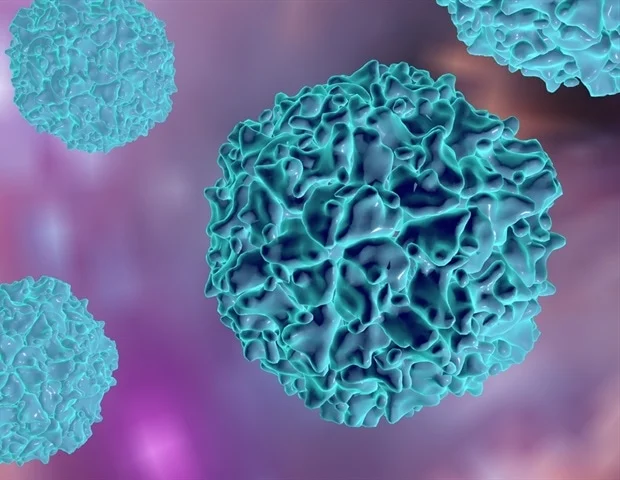Innovative Scanning Technique Enables Better Lung Function Monitoring
Monitoring lung function is crucial for diagnosing, managing, and treating various respiratory diseases, including asthma, chronic obstructive pulmonary disease (COPD), and lung cancer. Historically, lung function tests, such as spirometry, have been essential tools in respiratory care. However, traditional methods often have limitations, such as being unable to provide real-time, detailed insights into the lung’s structural and functional health. As a result, there has been a growing need for more advanced, precise methods for lung monitoring.
In response to these needs, a groundbreaking scanning technique has emerged, offering superior capabilities in assessing lung function. This innovative technique combines advanced imaging technology, data analytics, and machine learning, providing clinicians with more accurate and comprehensive assessments of lung health. This development promises to enhance the way respiratory diseases are diagnosed, tracked, and treated, ultimately improving patient outcomes.
This article explores the innovative scanning technique that is transforming lung function monitoring, examining how it works, its benefits, and its potential to revolutionize respiratory healthcare.
The Importance of Monitoring Lung Function
Lung function is a critical indicator of overall respiratory health. The ability of the lungs to take in oxygen, expel carbon dioxide, and circulate air effectively is vital for sustaining life. Various conditions, such as asthma, COPD, pulmonary fibrosis, and lung cancer, can affect lung function, leading to breathing difficulties and reduced quality of life.
Traditionally, lung function has been measured using tests like:
- Spirometry: Measures how much air a person can breathe in and out and how quickly.
- Peak flow measurement: Assesses the speed of exhalation, often used for asthma monitoring.
- Diffusion capacity testing: Measures how well oxygen passes from the lungs into the blood.
While these tests are valuable, they only offer a snapshot of lung function at a given time. Furthermore, these tests are typically limited in their ability to monitor lung structure, detect early-stage diseases, and provide continuous, real-time data. As a result, they may miss subtle changes in lung health that could lead to delayed diagnoses or inappropriate treatment.
The Need for an Advanced Monitoring Technique
Lung diseases often develop gradually, and early detection is key to preventing irreversible damage. However, traditional methods are not always sensitive enough to detect changes in lung function until they are significant. For example, in diseases like COPD or pulmonary fibrosis, lung function deteriorates over time, and early intervention is critical to slowing disease progression.
Current monitoring methods are often inconvenient for patients. Spirometry, for example, requires a patient to visit a healthcare facility, undergo the test, and wait for results. This process can be burdensome, especially for patients with chronic conditions who need regular monitoring.
Moreover, conventional imaging techniques, such as X-rays and CT scans, are excellent for visualizing lung structure but are not ideal for assessing lung function directly. These methods can identify structural abnormalities, such as tumors or inflammation, but they don’t offer detailed functional information, such as how well air is circulating in the lungs or how efficiently the lungs are transferring oxygen into the bloodstream.
There has been a clear demand for a more comprehensive, efficient, and non-invasive method of monitoring lung function that can detect issues early and be used for regular monitoring.
The Innovative Scanning Technique: Overview
In response to the limitations of traditional monitoring methods, researchers have developed an innovative scanning technique that combines advanced imaging with functional data. This new method integrates magnetic resonance imaging (MRI), positron emission tomography (PET), and computed tomography (CT) into a unified system capable of assessing both the structural and functional aspects of the lungs in unprecedented detail.
One of the most notable aspects of this technique is its ability to measure regional lung function. Unlike traditional methods that assess overall lung function, this technique can pinpoint specific areas of the lungs that may be underperforming. This capability is crucial for understanding how different parts of the lung are affected by disease or injury.
How the Innovative Scanning Technique Works
The new scanning technique is based on the integration of several imaging modalities, each contributing different data points to create a comprehensive understanding of lung health. Here’s how it works:
- Magnetic Resonance Imaging (MRI) for Soft Tissue Imaging
MRI is used to generate high-resolution images of lung tissue. It allows clinicians to visualize the soft tissues of the lung in detail, offering insights into lung structure, ventilation, and perfusion. MRI is non-invasive and doesn’t involve radiation, making it a safer alternative for regular monitoring. - Positron Emission Tomography (PET) for Metabolic Activity
PET scanning is a powerful tool for visualizing metabolic activity. By using a radioactive tracer, PET can identify areas of inflammation, infection, or abnormal cell growth. When applied to the lungs, PET imaging can help detect early signs of diseases such as lung cancer or pulmonary infections. This method provides functional information about lung tissue that cannot be obtained through traditional imaging. - Computed Tomography (CT) for High-Resolution Structural Imaging
CT scans provide highly detailed, cross-sectional images of the lung. CT is particularly effective at detecting structural abnormalities, such as tumors, scars, or blockages. The addition of 3D reconstruction capabilities in advanced CT systems allows for a more detailed analysis of lung health. - Functional Imaging and Data Fusion
The true innovation of this technique lies in its ability to merge data from these three imaging modalities. The integration of functional data (from PET) with structural data (from CT and MRI) enables a more accurate assessment of lung health. Machine learning algorithms are used to analyze the vast amounts of data generated from these scans, identifying patterns and anomalies that may be overlooked by human clinicians.
Benefits of the Innovative Scanning Technique
1. Early Detection of Respiratory Diseases
The ability to detect early changes in lung function is one of the most significant advantages of this scanning technique. By identifying areas of lung dysfunction before significant damage occurs, clinicians can initiate treatments early, improving outcomes for patients with chronic conditions like COPD, asthma, or pulmonary fibrosis.
2. Personalized Treatment Plans
The detailed information provided by this technique allows for more personalized treatment plans. By identifying which regions of the lung are affected, doctors can tailor interventions to target specific areas, leading to more effective management of respiratory diseases.
3. Real-Time Monitoring
This scanning technique offers the ability to monitor lung function in real-time. This is especially important for patients with chronic lung conditions who require regular checkups. With continuous monitoring, changes in lung function can be tracked over time, providing a more dynamic view of a patient’s respiratory health.
4. Non-Invasive and Safe
Unlike some invasive procedures, this scanning technique is non-invasive and safe for repeated use. The use of MRI and PET scans reduces the need for more invasive tests like biopsies or bronchoscopy. Additionally, the absence of radiation exposure makes this technique ideal for regular monitoring, especially for young or vulnerable patients.
5. Improved Diagnosis and Treatment of Lung Cancer
Lung cancer is often diagnosed at later stages when treatment options are limited. The ability of this scanning technique to detect metabolic and structural changes in the lungs at an early stage can lead to earlier diagnosis and intervention, improving survival rates for lung cancer patients.
6. Better Understanding of Lung Function Across Populations
This innovative technique can provide valuable insights into how lung function varies across different populations. For example, it can help researchers study how diseases like asthma or COPD manifest differently in men and women or in different age groups, leading to more targeted interventions.
Applications in Clinical Practice
The new scanning technique is already beginning to be used in clinical settings to monitor a variety of lung diseases, including:
- Chronic Obstructive Pulmonary Disease (COPD): This technique allows for precise monitoring of airflow and oxygen exchange in patients with COPD, helping to track disease progression and optimize treatment.
- Asthma: By assessing lung function on a more granular level, doctors can adjust treatment plans for asthma patients based on specific areas of dysfunction, leading to more effective management.
- Pulmonary Fibrosis: The technique can detect early signs of lung scarring and fibrosis, providing opportunities for earlier interventions.
- Lung Cancer: Early detection of abnormal metabolic activity in the lungs can facilitate early-stage lung cancer diagnosis, when treatment options are most effective.
Challenges and Future Prospects
Despite its potential, this innovative scanning technique is not without challenges. The technology is still in its early stages, and widespread adoption will require significant investment in infrastructure, training, and research. Additionally, the cost of these advanced imaging techniques may be prohibitive for some healthcare systems.
However, as the technology continues to evolve, it is expected to become more affordable and accessible. With continued advancements in imaging technology, machine learning algorithms, and data analytics, this technique has the potential to revolutionize lung function monitoring and improve the management of respiratory diseases globally.
The innovative scanning technique that combines MRI, PET, and CT scans offers unprecedented insights into lung health. With its ability to detect early signs of lung disease, monitor lung function in real-time, and provide detailed, personalized data, it represents a major advancement in respiratory healthcare. As this technology becomes more widely available, it promises to improve outcomes for millions of patients by enabling earlier diagnosis, better treatment, and more effective management of respiratory conditions. The future of lung function monitoring is here, and it holds great promise for both clinicians and patients alike.














